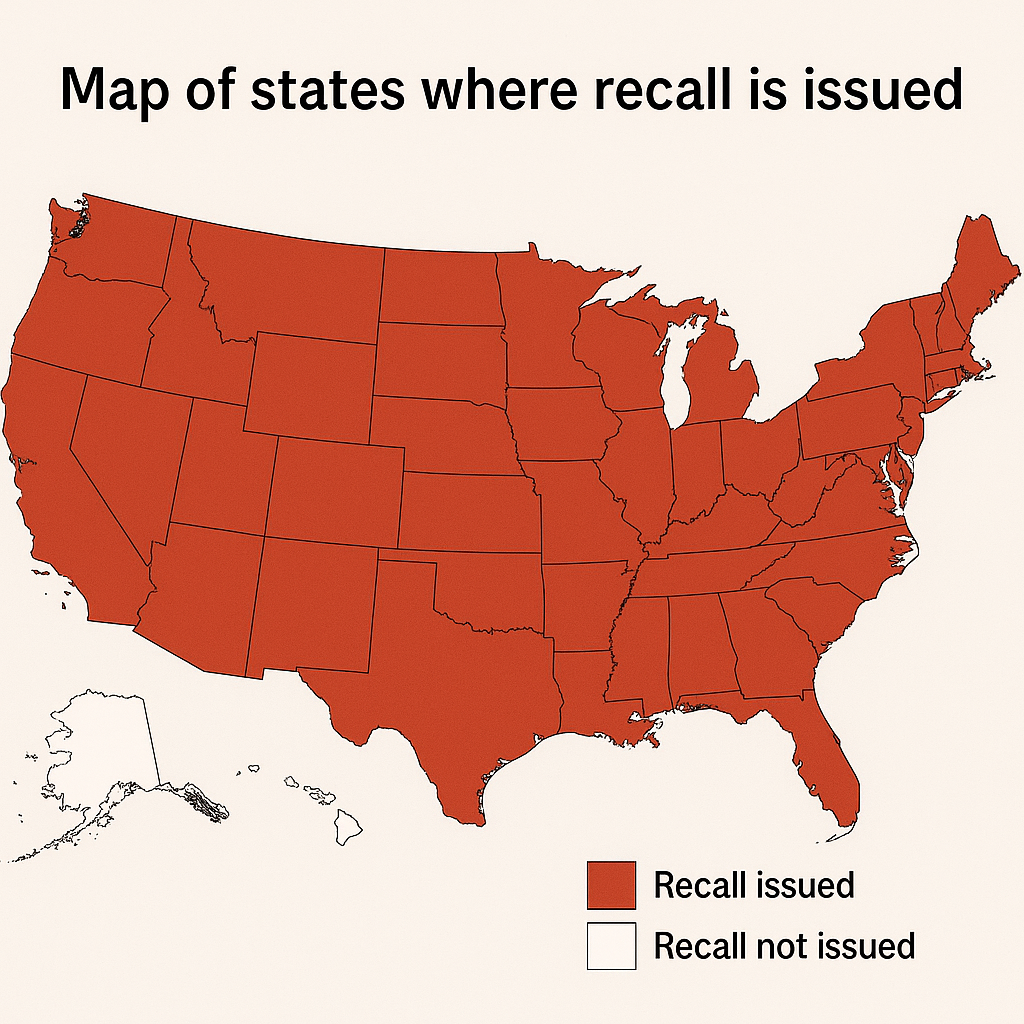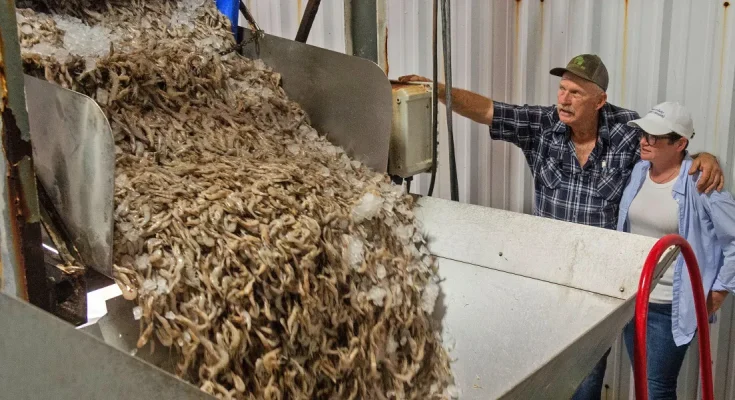After issuing a recall of an instant coffee brand, the FDA has sent out a warning advising the public to abstain from consuming certain raw frozen shrimp products.
The Food and Drug Administration (FDA) recently issued a warning for 13 states regarding a specific frozen shrimp product imported from a certain company. Civilians should not eat, sell, or serve this product due to the possible presence of Cesium-137 (Cs-137). The radioactive contamination was first detected in a single shipment of the imported product by Customs & Border Protection (CBP).
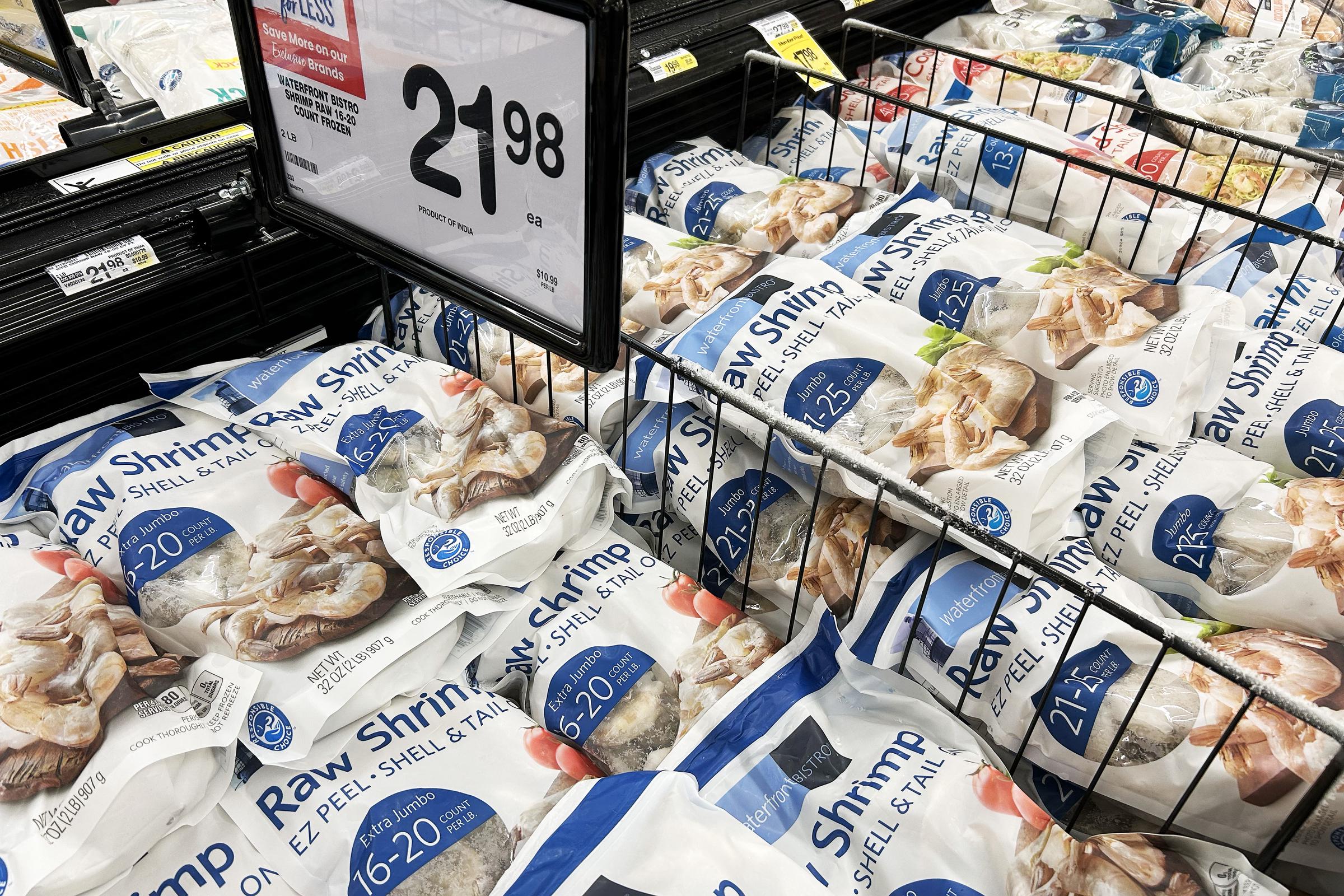
Packets of raw shrimp at a store in Annapolis, Maryland on April 4, 2025. | Source: Getty Images
Why Is It Dangerous?
The detected level of Cs-137 in the tested shrimp shipment — approximately 68 becquerels per kilogram (Bq/kg) — remains well under the FDA’s intervention threshold of 1,200 Bq/kg. However, federal agencies stress that even low-level exposure to radioactive materials should not be taken lightly.
Prolonged ingestion of food contaminated with Cs-137, even at sub-threshold levels, can gradually accumulate in the body and pose long-term health risks. This is especially so when such exposure becomes habitual.
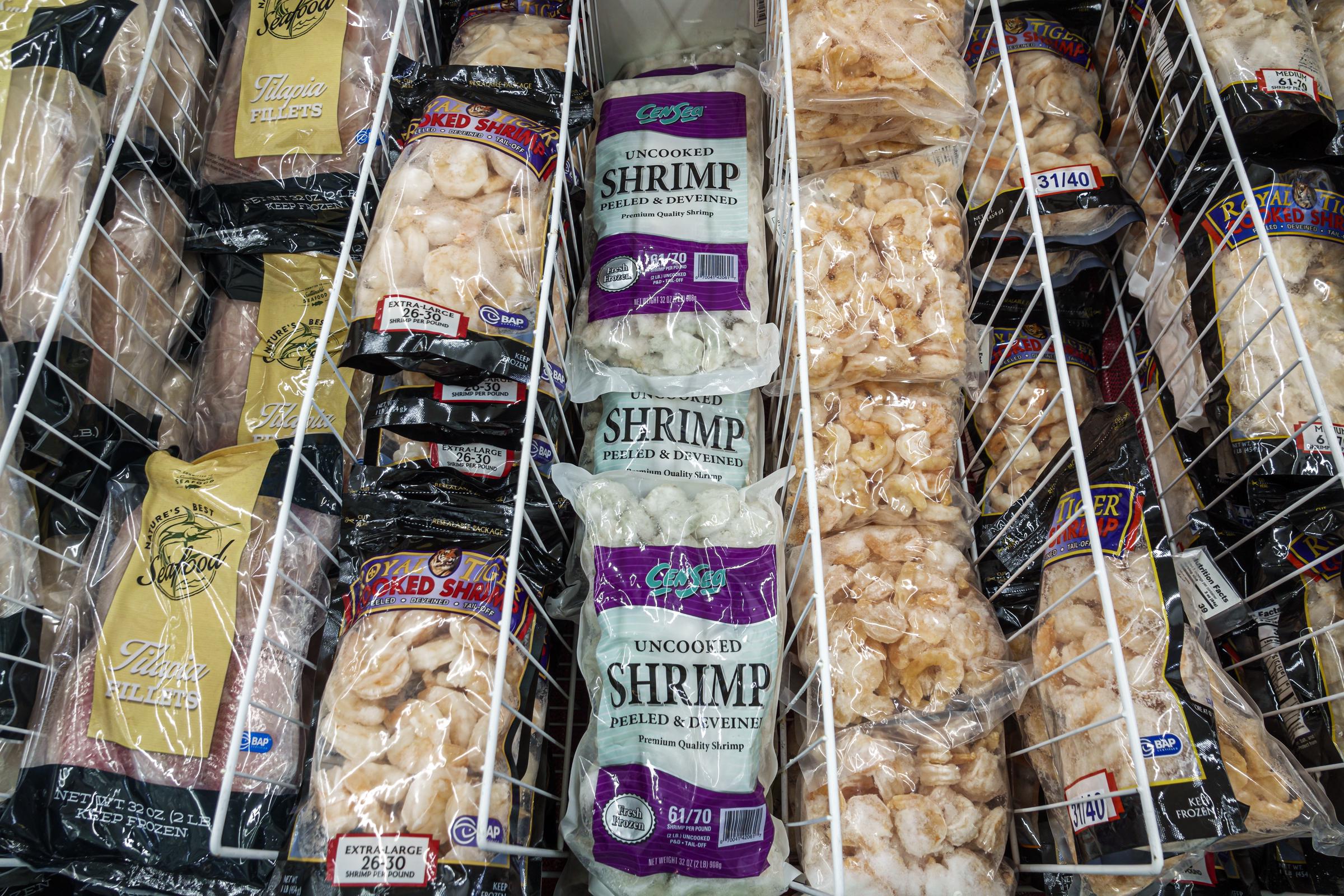
Frozen shrimp and other fish products at a store in Miami, Florida in 2022. | Source: Getty Images
The primary concern is Cs-137’s radioactive nature and its ability to emit both beta and gamma radiation, which are known to penetrate biological tissues and interfere with cellular function. Once ingested, Cs-137 is absorbed into soft tissues, particularly muscle, and begins emitting ionizing radiation from within.
This internal exposure can damage living cells at the DNA level, and over time, may lead to mutations that heighten the risk of developing cancer.
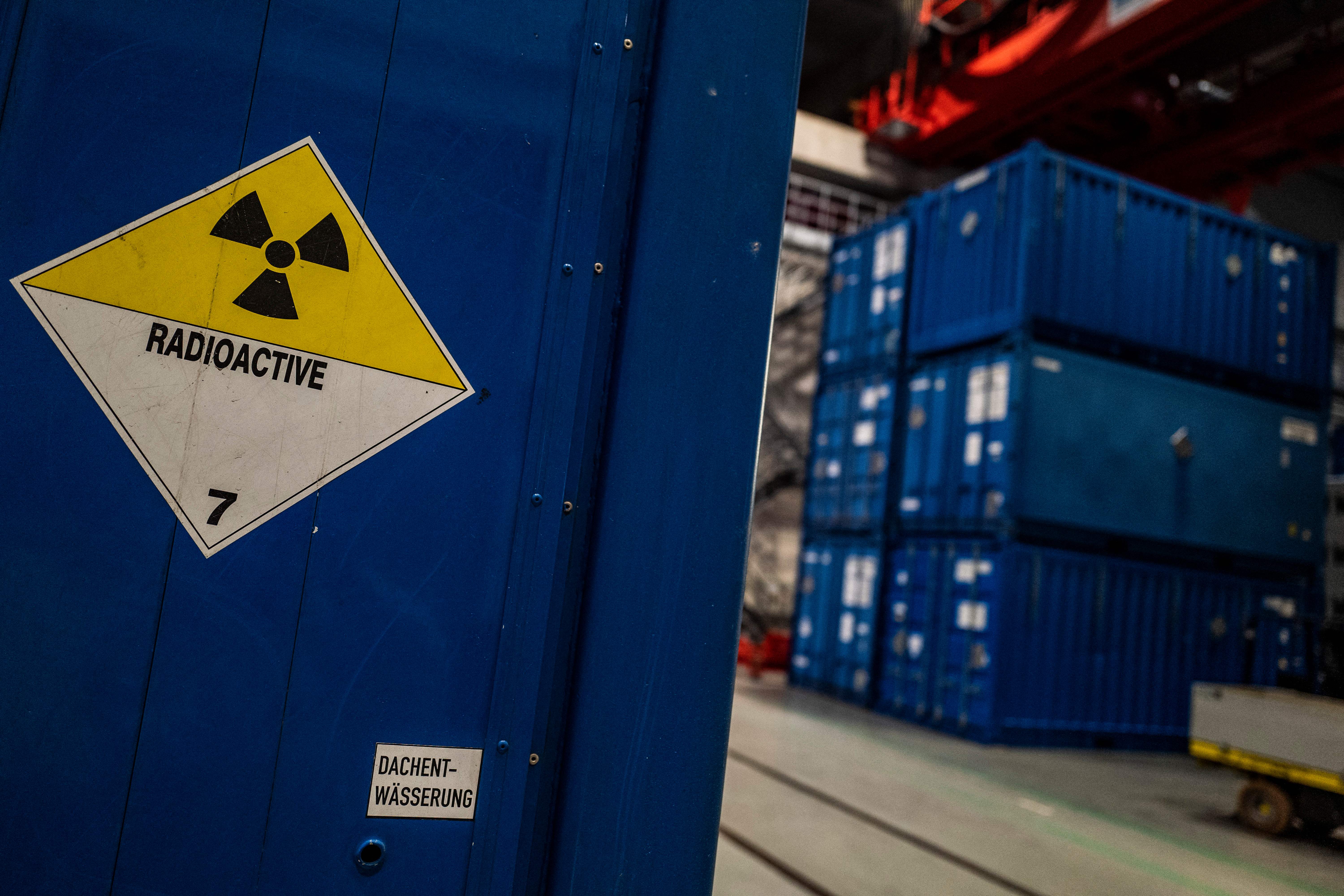
A radioactive label placed on a container at the EWN Nuclear Power Plant dismantling facility in Lubmin, Germany on March 16, 2023. | Source: Getty Images
While naturally occurring cesium is stable and non-radioactive, Cs-137 is a byproduct of nuclear fission, most often linked to weapons testing, reactor accidents like Chernobyl, and industrial use.
Due to its long half-life of approximately 30.17 years, Cs-137 remains in the environment for decades, often bonding with chlorides to form a crystalline powder that may be colorless, tasteless, and virtually undetectable without specialized equipment. Because there are no visible warning signs, these contaminated food products are especially hazardous for consumers.
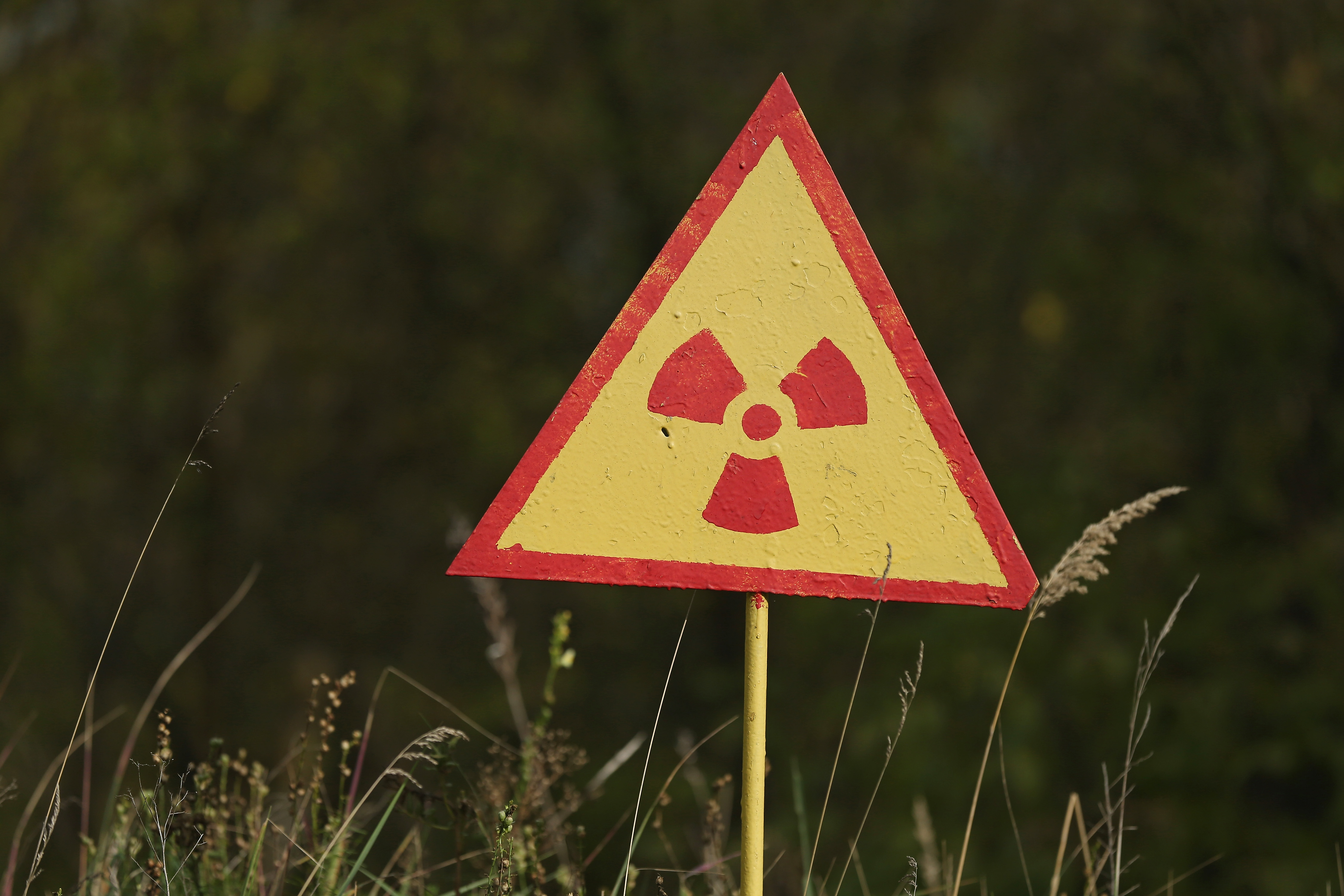
A radioactive warning sign located in Chornobyl (Chernobyl), Ukraine on September 29, 2015. | Source: Getty Images
In addition to its cancer-causing potential, Cs-137 exposure at higher doses has been linked to symptoms of acute radiation syndrome. This includes nausea, vomiting, diarrhea, bleeding, and in extreme cases, coma or death.
Studies conducted on laboratory animals have also noted altered behavior and signs of neurological or developmental harm. Public health authorities such as the Centers for Disease Control and Prevention’s (CDC) Agency for Toxic Substances and Disease Registry continue to emphasize the importance of minimizing even incidental contact with radioactive cesium.

A researcher working at a laboratory in Janeiro, Brazil on August 11, 2025. | Source: Getty Images
Though a single contaminated shipment may not cause an immediate hazard, the FDA’s advisory is grounded in the principle of precaution. By doing so, the agency aims to reduce cumulative exposure and safeguard population health over the long term.
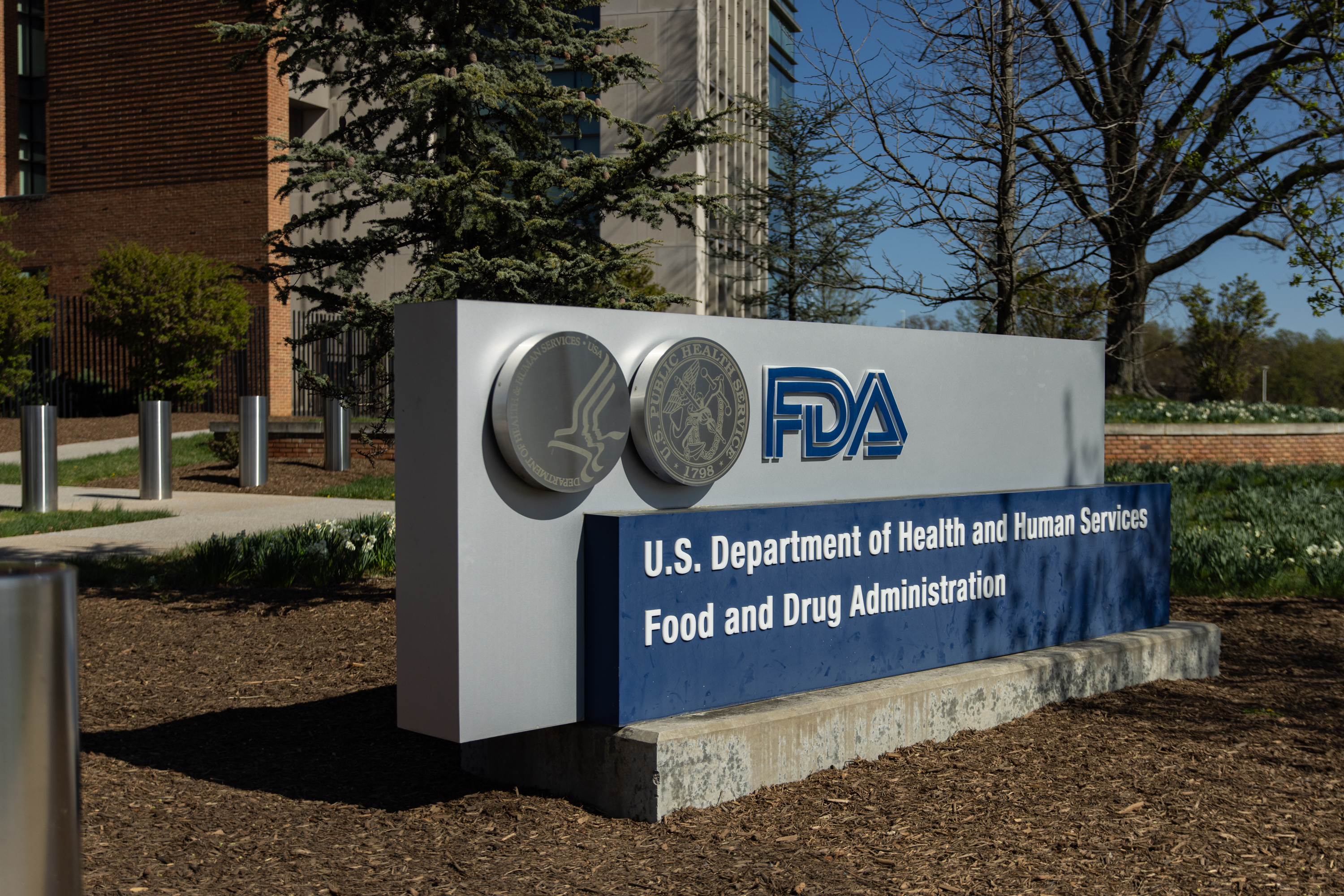
The FDA building sign at its White Oak campus in Silver Spring, Maryland on April 8, 2025. | Source: Getty Images
Brand and Codes of Product That Have Been Recalled
The frozen shrimp at the center of the FDA’s warning was processed by PT. Bahari Makmur Sejati, an Indonesian-based company also known as BMS Foods. According to officials, the contaminated product consists of raw, farm-raised white Vannamei shrimp packaged in two-pound bags under the “Great Value” brand label.
Three specific batch codes have been flagged for potential radioactive contamination:
- Lot Code 8005540-1
- Lot Code 8005538-1
- Lot Code 8005539-1
All affected products share the same best-by date of March 15, 2027, and carry the item code 7383108. While no contaminated products from the tested shipment officially entered U.S. commerce, the FDA’s advisory was issued in the interest of transparency and consumer safety.
Where It Is Sold
The shrimp products were sold in Walmart stores across 13 states, putting many consumers at risk of exposure. After Cs-137 was first detected in a shipment from PT. Bahari Makmur Sejati, the FDA began working with the company’s distributors and retailers.
Even though only one shipment tested positive for radioactive contamination, the agency advised recalls from subsequent shipments that did not immediately trigger alerts but may still pose safety concerns.
In its review, the FDA determined that the shrimp violated the Federal Food, Drug, and Cosmetic Act, citing evidence that it was prepared, packed, or stored under insanitary conditions that could have allowed contamination with Cs-137.
List of States Affected
The FDA has confirmed that the shrimp products were distributed in the following 13 states:
- Alabama (AL)
- Arkansas (AR)
- Florida (FL)
- Georgia (GA)
- Kentucky (KY)
- Louisiana (LA)
- Missouri (MO)
- Mississippi (MS)
- Ohio (OH)
- Oklahoma (OK)
- Pennsylvania (PA)
- Texas (TX)
- West Virginia (WV)
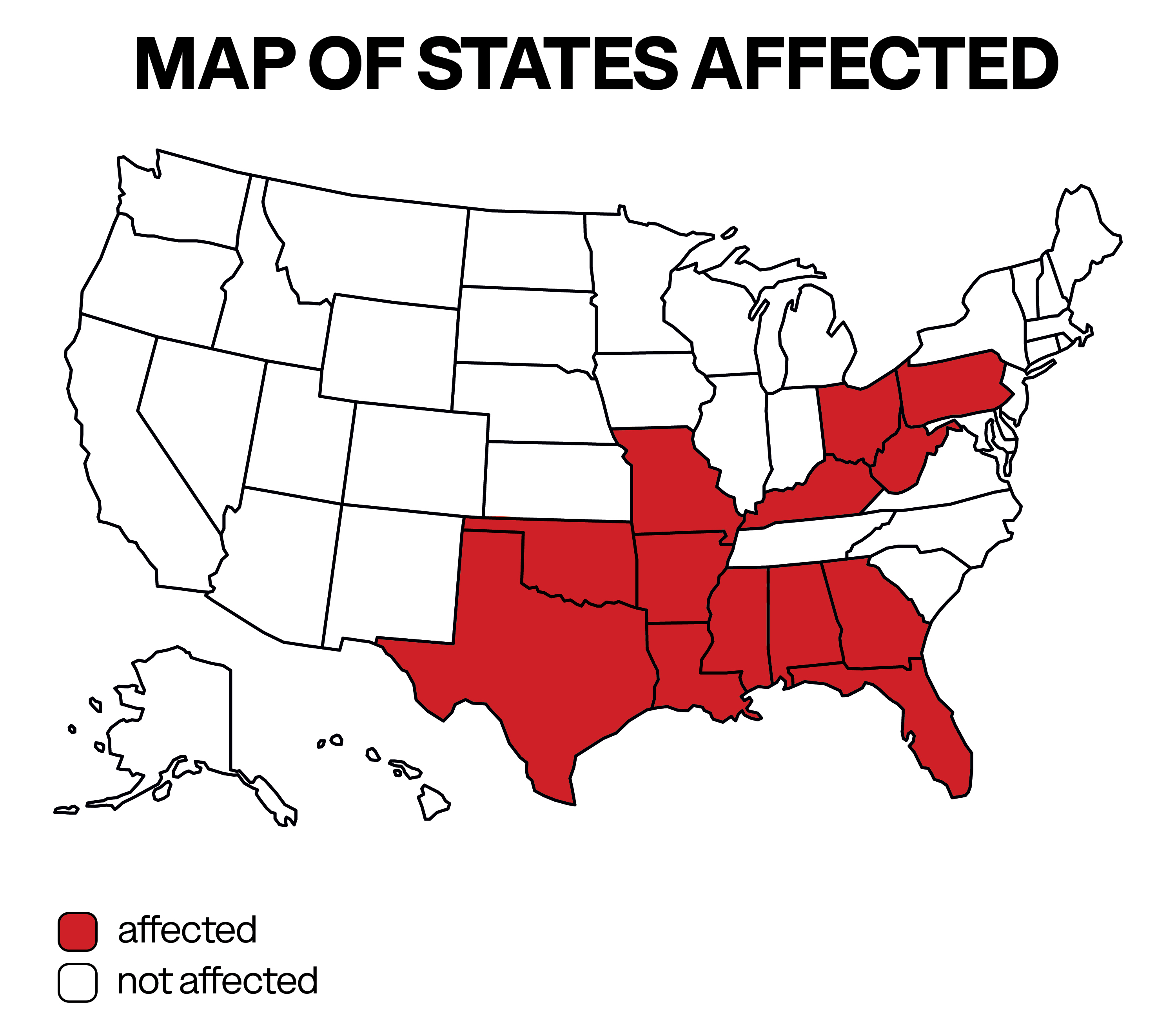
A map showing the affected U.S. states in red. | Source: Amomama/For Illustration purposes
What’s Next?
In its most recent update on August 19, 2025, the FDA confirmed that traces of Cs-137 had been detected not only in raw shrimp shipments but also in a sample of breaded shrimp linked to PT. Bahari Makmur Sejati.
While levels remained below federal intervention thresholds, regulators emphasized that prolonged exposure to contaminated products could still pose a potential health concern. As a result, officials have placed the Indonesian company on a new import red list alert for chemical contamination.
This measure effectively blocks additional shipments from the company from entering the U.S. until the underlying issues have been resolved to the agency’s satisfaction.
To date, the FDA has also learned that Walmart received implicated raw frozen shrimp imported after the first detection of Cs-137 by CBP. Although these shipments did not immediately trigger contamination alerts, the agency has formally recommended that Walmart recall the product as a precautionary measure.
Consumers are being urged to check their freezers for specific lots of Great Value raw frozen shrimp and to throw them away immediately if found. The agency reiterated that these products should not be eaten, sold, or served under any circumstances.
The FDA continues to coordinate with CBP and Indonesian authorities to investigate the root of the contamination and prevent future shipments from slipping through. Advisory updates will be issued as new information emerges, reflecting the agency’s ongoing commitment to preventing contaminated food from entering U.S. commerce and safeguarding public health.
This shrimp advisory isn’t the only food safety matter the FDA has been handling recently. The agency is also overseeing a separate recall involving Clover Valley® instant coffee, sold at Dollar General stores nationwide, urging customers to stop using the product and return it for a refund.
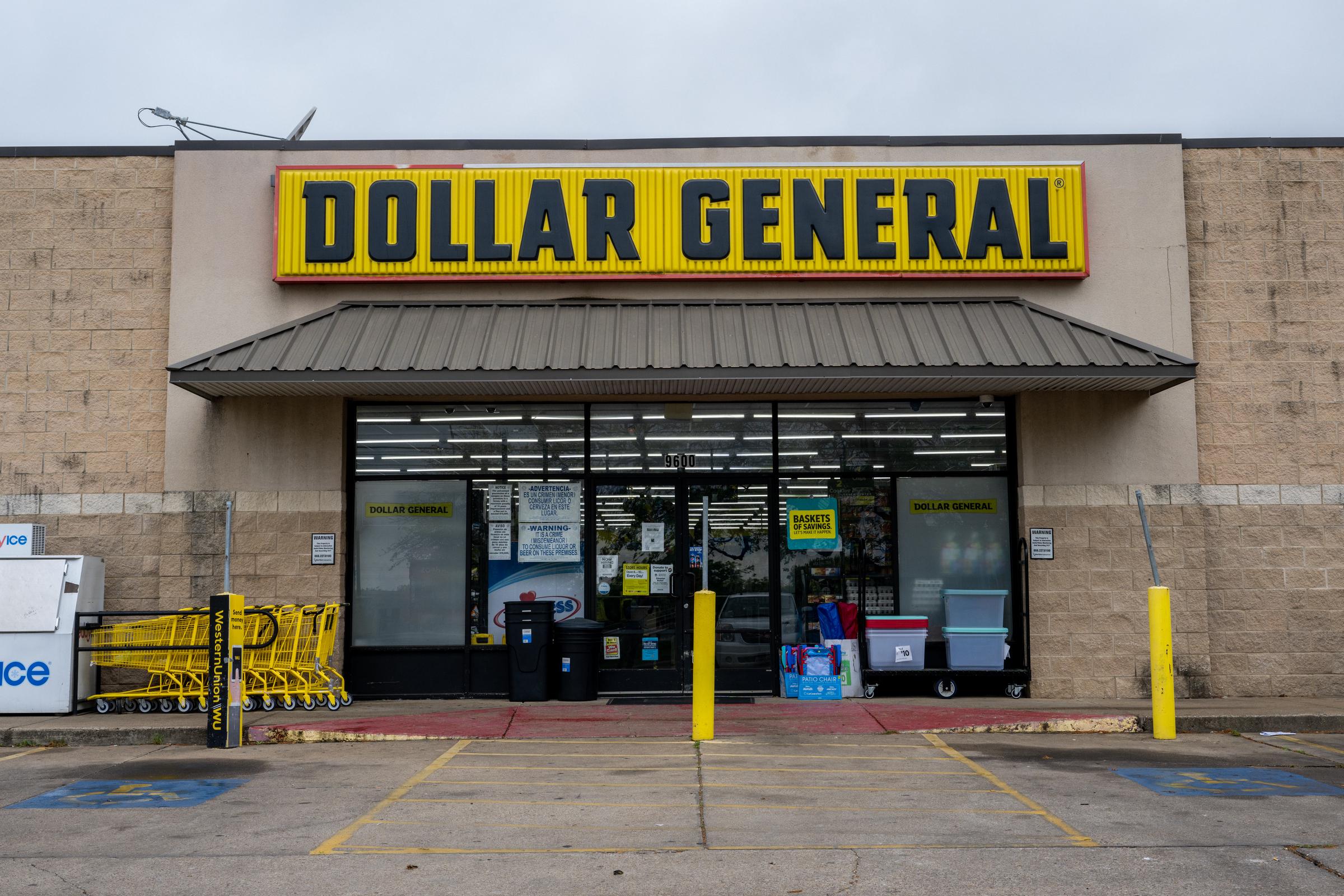
An exterior of a Dollar General store is seen in Austin, Texas on March 16, 2023. | Source: Getty Images
Why Is It Dangerous?
The recall began after a shopper reported a potential problem—the presence of glass fragments—in certain packages of the product to store staff. Consuming glass fragments poses serious hazards, including tooth damage, cuts to the mouth and throat, and possible injury to the intestines.
So far, there have been no confirmed cases of illness or injury connected to the affected coffee. The FDA advises consumers to avoid drinking any coffee that meets the recall criteria and to seek medical care if they believe they may have swallowed glass fragments.
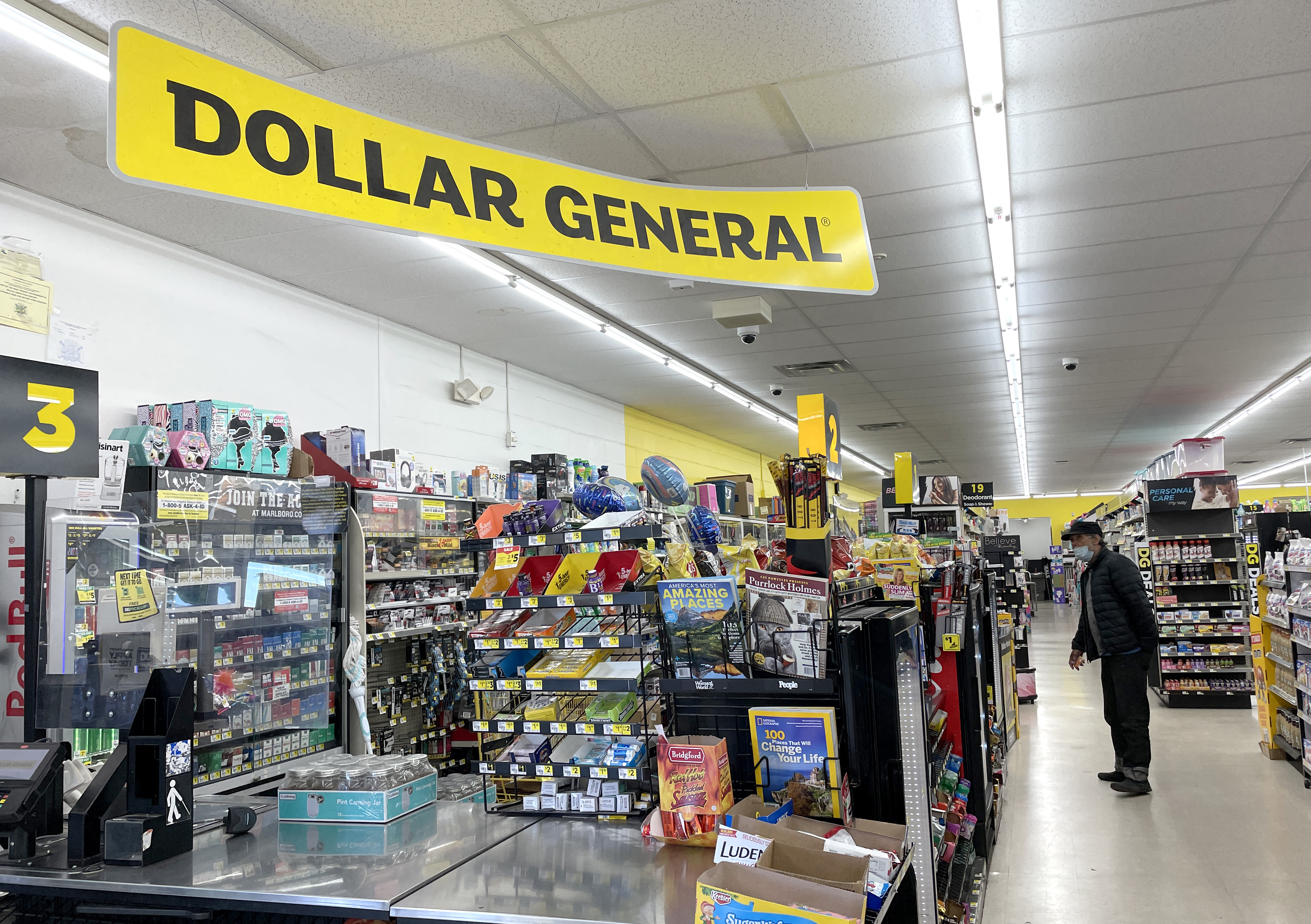
A customer shops at a Dollar General store in Vallejo, California on March 17, 2022. | Source: Getty Images
Brand and Codes of Product That Have Been Recalled
The recalled coffee can be identified by specific lot numbers and expiration dates printed on its packaging. Customers are encouraged to check their purchases and compare them to the recall details. Guidance for returning the product and receiving a refund is available on Dollar General’s official website.
The recall applies to the following instant coffee products, with lot and best-by date details located near the neck of the 8-ounce coffee container:
- Lot: L-5163 / Best By 12/13/2026
- Lot: L-5164 / Best By 12/13/2026
- Lot: L-5165 / Best By 12/14/2026
Where It Is Sold
The affected coffee was distributed through Dollar General, a major U.S. retail chain operating in more than 20,500 locations across 48 states. About 75 percent of the nation’s population lives within five miles of one of its stores. Established in 1939, the company markets itself as a convenient source for affordable everyday essentials, groceries, personal care items, and so much more.
Dollar General maintains a strong focus on customer accessibility, workforce growth, and community support. Its charitable arm, the Dollar General Literacy Foundation, has provided over $271 million to educational programs, reaching more than 23 million people.
